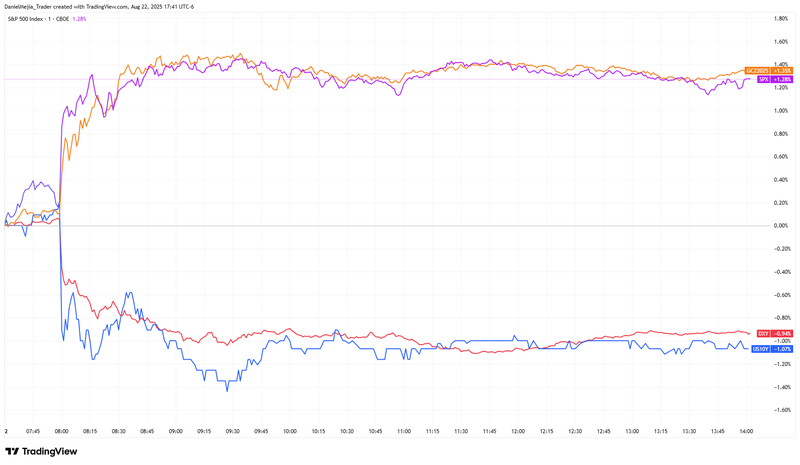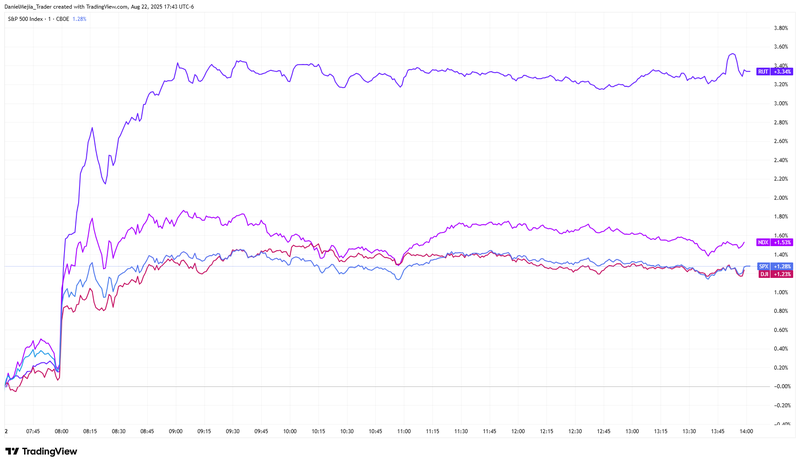Powell's dovish tone lifts markets on rate cut hopes
Jerome Powell struck a more dovish tone, signaling openness to the beginning of rate cuts while stressing data dependence. Markets responded unevenly: U.S. equities and gold advanced, while the U.S. dollar and 10-year Treasury yields decrease after the close.

Powell’s dovish tone boosted expectations of monetary easing, although economic data are awaited.
The Fed chair’s remarks moved markets: indices and gold rose, while the dollar and yields fell.
U.S. small caps outperformed other indexes on improved prospects.
Powell indicates that cuts could start, but data is needed
Federal Reserve Chair Jerome Powell adopted a more dovish stance, keeping open the option of starting rate cuts as early as September. He emphasized that upcoming data—particularly the late-August releases and early-September employment figures—will be pivotal to the decision.
The CME Group’s FedWatch tool increased the implied probability of a 25 bp September cut from 75% to 84%. Even so, the tool still embeds only two cuts by year-end 2025, underscoring how much September data will matter for clarifying the U.S. policy path.
Markets reacted mixed to easing expectations
Powell’s remarks spurred broad risk appetite. Intraday momentum pushed major U.S. stock indexes above 1%, with the S&P 500 finishing +1.28% after the close. Gold gained 1.35%, reflecting a softer policy outlook and a weaker dollar backdrop. Conversely, the U.S. Dollar Index fell 0.94%, and the 10-year Treasury yield declined 1.07%.
This produced a near-textbook inverse relationship: easing expectations supported equities and gold, while pressuring the dollar and long-end yields as the market increasingly prices a lower policy path.

Small caps benefited most from the prospect of easing
U.S. equities rallied broadly on Powell’s tone, but small caps led the move. The Dow Jones rose 1.23%, the S&P 500 1.28%, the Nasdaq index 1.53%, and Russell 2000 (RUT) 3.34%.
Small-cap companies are typically more sensitive to financing conditions. A restrictive rate environment lifts borrowing costs and constrains access to credit, weighing on growth and cash-flow coverage. By contrast, an easier policy tends to lower financing frictions, improve investment capacity, and bolster earnings trajectories—strengthening the case for small-cap performance when the market anticipates cuts.

